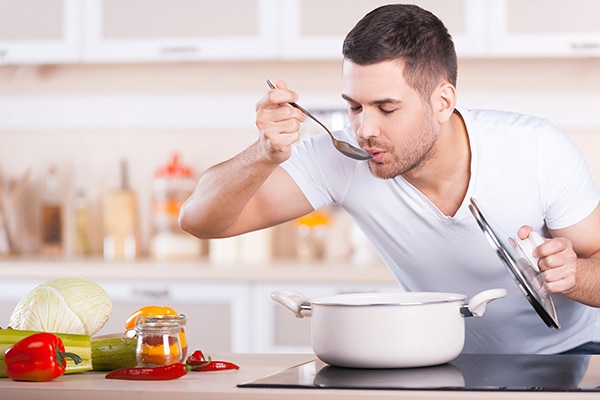
“A way to a person’s heart is through his/her stomach” is a phrase that has more than one meaning! According to the National Lipid Association, lifestyle behaviors such as healthy eating and physical activity are vital components in managing increased blood fat levels, known as dyslipidemia. Developing healthy eating habits can protect your heart and vessels.
So, what is best to eat for your heart? There are several eating guides that have shown to help lower blood fats. These eating guides, the Mediterranean style, DASH (Dietary Approaches to Stop Hypertension), United States Department of Agriculture (USDA) Healthy U. S. -style, American Heart Association and a Plant Based Diet, have common themes of including plenty of vegetables, fruits, whole grains and either lean or meatless meals. One eating plan may suit your likes better than another.
Here are the combined main points of what is thought to be best practice for your heart:
- Strive for a healthy body weight. For people who are overweight or obese, a modest 5-10 percent weight loss can help. That’s 10-20# for a person who weighs 200 pounds.
- Avoid trans fat. Read labels with the intent to avoid ingredients with the words “partially hydrogenated oils”.
- Pick foods with lower saturated fats. Choose oils with unsaturated fats instead such as olive, canola, safflower or corn oil (to name a few oils), or other foods containing unsaturated fat such as avocados, unsalted nuts and unsalted seeds.
- Choose lean meats such as chicken and turkey without skin, lean beef or pork (having “loin” or “round” in title), fish, or meatless entrees such as soy, beans or lentils. Have a goal of enjoying a meatless meal at least once a week.
- If you enjoy fish, have two servings (a serving is about 4 ounces) a week.
- Limit high cholesterol foods such as eggs, shrimp and organ meats.
- Enjoy four servings of nuts (a serving is 1 ounce) each week.
- Foods such as soup beans, peas, onions, oatmeal, quinoa, and berries have soluble fiber. Eating 5-10 grams of soluble fiber can help lower LDL cholesterol by 5-11 points.
- Many fruits, vegetables and whole grains contain plant sterols. This can also assist in lowering LDL cholesterol.
- Drink alcohol in moderation. The National Lipid Association defines this as <7 drinks/week for women and <14 drinks/week for men while avoiding binge drinking.
- Choose fat free dairy or dairy alternatives a couple of times per day.
- Enjoy water or a calorie free drink while avoiding sugary drinks. Choose fruit for dessert.
- Add flavor to foods with herbs, spices, citrus juices and vinegars instead of salt. Read labels to choose lower sodium foods.
Try this warm soup to warm your heart!

Heart Healthy Chicken Tortilla Soup Recipe
1 can (15.25 oz) low sodium corn, drained
1 medium onion, sliced
1 red pepper
2 cans (15.25 oz) low sodium black beans, drained and divided
1 bunch cilantro
1 Tablespoon minced garlic
2 teaspoons ground cumin
1 teaspoon chili powder
½ teaspoon dried oregano
½ teaspoon coriander
4 cups low sodium chicken broth, divided
4 ounces canned green chilies
28 ounces low sodium crushed tomatoes
(tip: if unable to find low sodium crushed tomatoes,
process 28 oz of low sodium diced tomatoes in food
processor in place of crushed tomatoes)
3 cups cooked and shredded skinless, boneless chicken
1. Set oven to broil. Spread corn on baking sheet. Broil until corn lightly browned. Set aside corn in bowl.
2. Spread sliced onions on baking pan and broil until onions start to brown. Place onions in separate bowl.
3. Cut pepper in half, removing seeds. Place skin side up under broiler. Broil until skin turns black. Remove from broiler and place peppers in covered dish until cooled. Carefully remove blackened skin. Dice pepper and set aside.
4. Add cilantro, one can of drained beans, onions, garlic, cumin, chili powder, oregano and coriander and ¼ cup low sodium chicken broth to food processor and pulse until mixture is a thick puree.
5. Add chicken broth to a pot over medium heat.
6. Add chilies, crushed tomatoes, chicken, corn, pepper and remaining can of black beans.
7. Carefully add pureed bean mixture to soup- this will thicken the soup.
8. Simmer for 20-30 minutes.
Yield: 12 cups
Serving size: 1 cup
Portion leftover soup and store in freezer up to 3 months.
Calories: 158
Saturated fat: 1 gram
Sodium: 150 mg
Soluble fiber: 1.5 grams
Cholesterol: 32 mg









